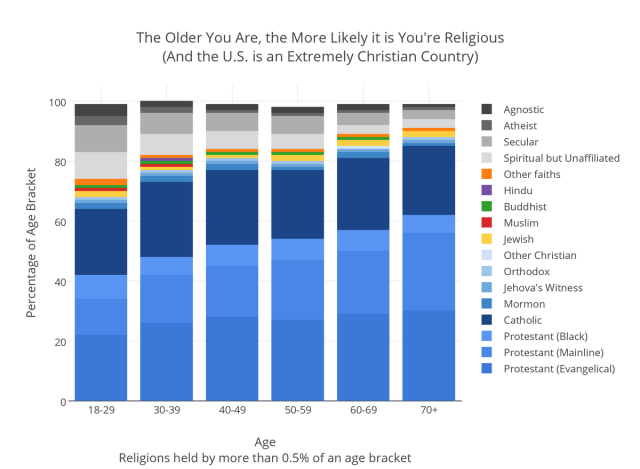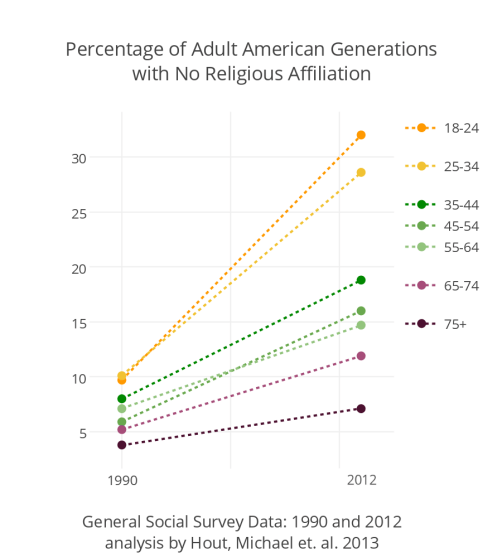
“Religion Among the Millennials” Pew Research Center, 2010
Here’s a bar chart to look at whenever you wonder why your atheist/humanist/agnostic friends keep having church weddings: It’s for their grandparents.
According to Pew Research Center, which gathered the survey data in this bar chart, 81% of all Americans aged 30 and older, and 88% of American septugenarians (aged 70 and older), identify as Christian. Young Americans, on the other hand, are pretty singularly secular in comparison. Only 68% of adults under 30 identified as Christian. 25% of adults under 30 didn’t affiliate with any religion whatsoever.
Is this just because people tend to get more religious as they get older, or is religion actually on the decline with younger people? According to Pew, today’s young adults reject organized religion at a significantly higher rate than generations before them at their age: In the late 1970s, 13% of Baby Boomers had no religious affiliation; by the late 1990s, 20% of Generation X-ers had no religious affiliation.
These numbers came from General Social Surveys (GSS), which reach back to 1972. According to GSS, “unaffiliation” actually increased for all age cohorts over the past few decades, but most dramatically for the youngest among them:

“More Americans Have No Religious Preference”, Hout, Michael et. al. 2013
And if we look at the rate of all “no religion” respondents over time, we can see their numbers really started to grow at around 1990:

ARDA analysis of GSS data
According to Pew, “if these generational patterns persist, recent growth in the size of the unaffiliated population may continue.” Secularism might experience a period of hockey-stick-shaped growth in the U.S., which would be a big deal for one of the most strongly Christian countries in the world.
This post was written by Rosie Cima; you can follow her on Twitter here. To get occasional notifications when we write blog posts, please sign up for our email list



